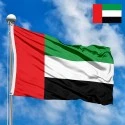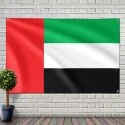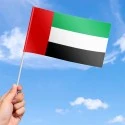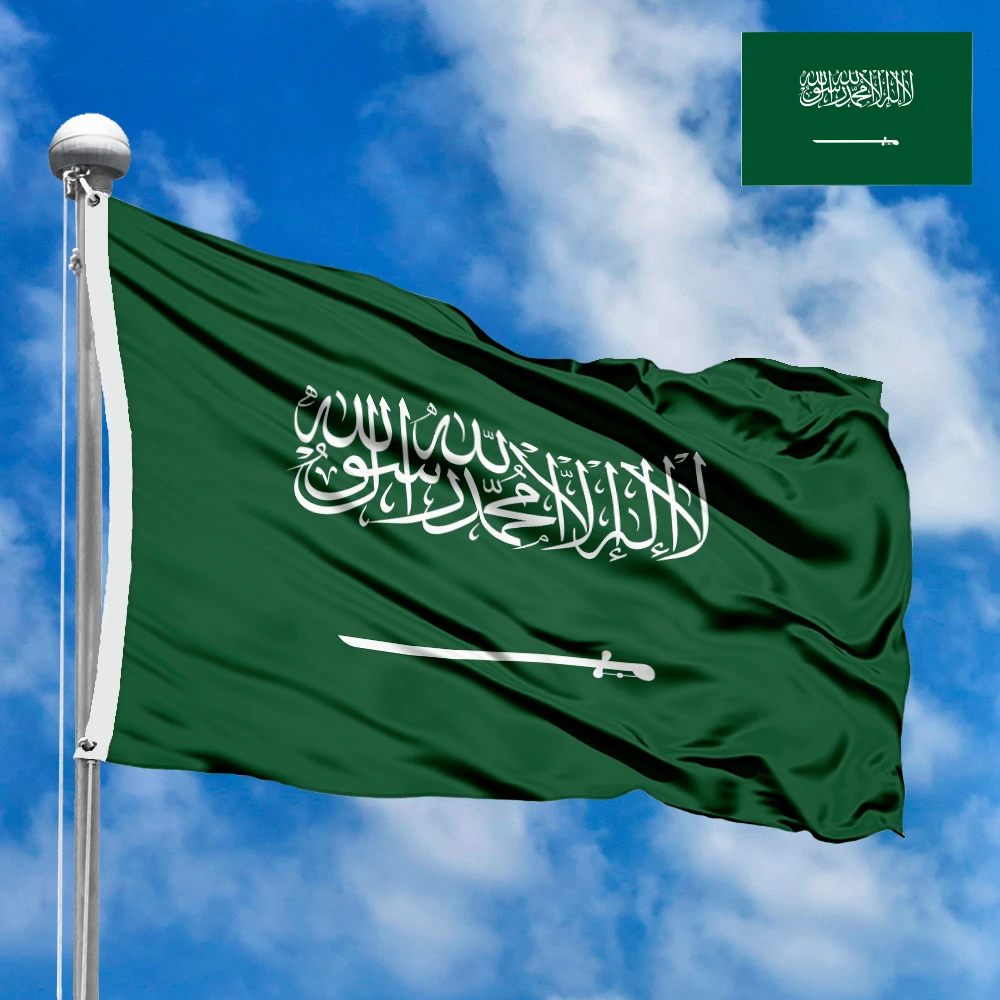The national flag of the United Arab Emirates (UAE) is a profound emblem of the nation's rich history, its journey towards unity, and its ambitious aspirations for the future. Adopted on the very day of the federation's formation, it vividly tells the story of the UAE's foundation on principles of Arab nationalism, strength, peace, and prosperity. Far more than a mere piece of cloth, it is a living symbol of national pride and a testament to the remarkable progress achieved by the seven emirates.
Design and Dimensions
The flag of the UAE features a distinctive design that incorporates the traditional Pan-Arab colors. It is composed of three equal horizontal stripes and a single vertical stripe on the hoist side. From top to bottom, the horizontal stripes are green, white, and black. The red vertical stripe is positioned on the left (hoist) side of the flag and is notably wider than the horizontal stripes, occupying approximately one-quarter of the flag's total width. The official proportions of the flag are 1:2 (height to width), giving it a balanced and elongated appearance that enhances its striking colors.
Symbolism of the Colors and Elements
Each color on the UAE flag is imbued with deep meaning, drawing from both traditional Arab symbolism and the specific aspirations of the Emirati nation:
-
Red Vertical Stripe: This bold stripe on the hoist side symbolizes courage, bravery, sacrifice, and the hardiness of the Emirati people. It represents the countless sacrifices made by previous generations for the nation's independence and unity. Historically, red was also the color of the Sharifian flag, signifying allegiance to the Prophet Muhammad and the noble spirit of the Arab nation.
-
Green Horizontal Stripe (Top): The vibrant green stripe represents hope, joy, love, and optimism. It symbolizes the fertility of the land, the extensive palm groves and agricultural richness that characterize parts of the UAE, and the prosperity that has come with rapid development. It also reflects the enduring spirit of Islamic principles.
-
White Horizontal Stripe (Middle): The central white stripe embodies honesty, purity, peace, and neutrality. It reflects the UAE's commitment to promoting peace and stability both domestically and internationally. It also signifies the nation's charitable endeavors and its aspiration for a bright, unblemished future.
-
Black Horizontal Stripe (Bottom): The bottom black stripe signifies solidarity, strength, and the defeat of enemies. While often associated with the oil wealth that has powered the UAE's transformation, its primary interpretation also lies in representing the strength of the nation's foundations and the rejection of oppression or injustice. Together, these colors powerfully convey the UAE's identity as a strong, peaceful, prosperous, and proud Arab nation.
Creation and Adoption
The design of the UAE national flag is credited to a young Emirati named Abdullah Mohammad Al Maainah. In 1971, a nationwide competition was held to design a flag for the soon-to-be-formed federation of emirates. Out of over 1,000 entries, Al Maainah's design was selected. At the time, he was only 19 years old.
The choice of Pan-Arab colors (red, green, white, and black) was deliberate, as these colors originated from the flag of the Arab Revolt (1916-1918), which symbolized the unity and struggle for liberation of Arab nations from Ottoman rule. Many Arab countries have adopted variations of these colors in their national flags, reflecting a shared heritage and aspiration for unity. The specific arrangement on the UAE flag, with the distinctive vertical red stripe, gives it a unique identity while maintaining its connection to wider Arab nationalism. The flag was officially adopted on December 2, 1971, the very day the United Arab Emirates was established as an independent sovereign federation.
Significance for the Inhabitants
For the people of the United Arab Emirates, their national flag is a source of immense pride, unity, and inspiration. It represents the remarkable success story of a young nation that transformed from desert communities into a global hub of innovation, culture, and economic prowess. The flag embodies the collective dreams and aspirations of the Emirati people for a prosperous, secure, and peaceful future, while deeply honoring the sacrifices of their forefathers and their rich Arab and Islamic heritage.
On Flag Day (November 3rd), a nationwide celebration, citizens proudly hoist the flag, affirming their loyalty and commitment to the nation's leadership and its continued progress. The flag serves as a constant reminder of the unity of the seven emirates, their shared vision, and the principles of tolerance and co-existence that define Emirati society. It instills a deep sense of belonging and patriotism among all who live in the UAE, symbolizing the nation's journey towards an ever brighter future.
Interesting Facts
-
Young Designer: The flag was designed by a 19-year-old Emirati youth, Abdullah Mohammad Al Maainah, whose vision captured the essence of the new nation.
-
Flag Day: Celebrated annually on November 3rd, Flag Day commemorates the accession of Sheikh Khalifa bin Zayed Al Nahyan as President of the UAE and is a vibrant display of national unity and pride.
-
Pan-Arab Roots: The colors of the flag are derived from the Pan-Arab colors, symbolizing unity among Arab nations and the aspirations of the Arab Revolt.
-
Symbol of Federalism: The flag visually represents the coming together of the seven emirates into a unified federation, a remarkable achievement in regional history.
-
Historical Echoes: While modern, the flag's design subtly incorporates the history of various emirates that once used plain red flags, with the prominent red stripe serving as a nod to that heritage.
In the demonstration images, full-size flags are shown with proportions of 2:3, and hand-held flags with proportions of 1:2.









 Waving flag
Waving flag
 Sizes:
Sizes:
 Round flag
Round flag
 Sizes:
Sizes:
 Rectangular flag 2:3
Rectangular flag 2:3
 Sizes:
Sizes: